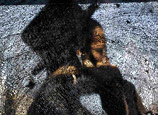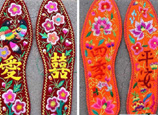
JERUSALEM, Nov. 6 (Xinhua) -- Researchers at the Hebrew University of Jerusalem (HU) have devised a new method of exposing barely legible fingerprints on wet or dry paper documents.
The method, which produces a crisp black-on-white image of the suspected fingerprint instead of the usual positive image, uses gold nanoparticles and elemental silver to develop the print, in a manner similar to that of developing a photograph, the university said Tuesday in a press briefing sent to Xinhua.
Professors Yossi Almog and Daniel Mandler of HU's Institute of Chemistry headed the research, which promises to make police forensic work a little easier in discerning who has handled such evidential documents as checks, paper currency and notes.
"Since our method relies only on the fatty components in the fingerprints, the sweaty aspects play no role in the imaging process," said Almog.
The professor added that the new technique also alleviate another problem in some investigations and crime scenes: "If paper has become wet, it has previously been difficult to detect fingerprints because the amino acids in the sweat, which are the primary substrate for current chemical enhancement reactions, will be dissolved and washed away by water, whereas the fatty components are barely affected."
According to the university, the conventional technique uses gold particles "which adhere to the amino acid components of the sweat in the fingerprints, and then silver is deposited onto the gold. The result is quite often low-contrast impressions of the fingerprints."
The new method, the researchers said, "utilizes the sebum (an oily substance secreted by the sebaceous glands that helps prevent hair and skin from drying out) from the fingerprints as a medium to avoid this interference. Treatment with a developer containing silver then turns the areas with gold on them black, resulting in a clear, negative image of the fingerprint."
The new method was published in the English-language edition of the journal Angewandte Chemie, published by the German Chemical Society.
















 Landmark building should respect the public's feeling
Landmark building should respect the public's feeling


![]()
